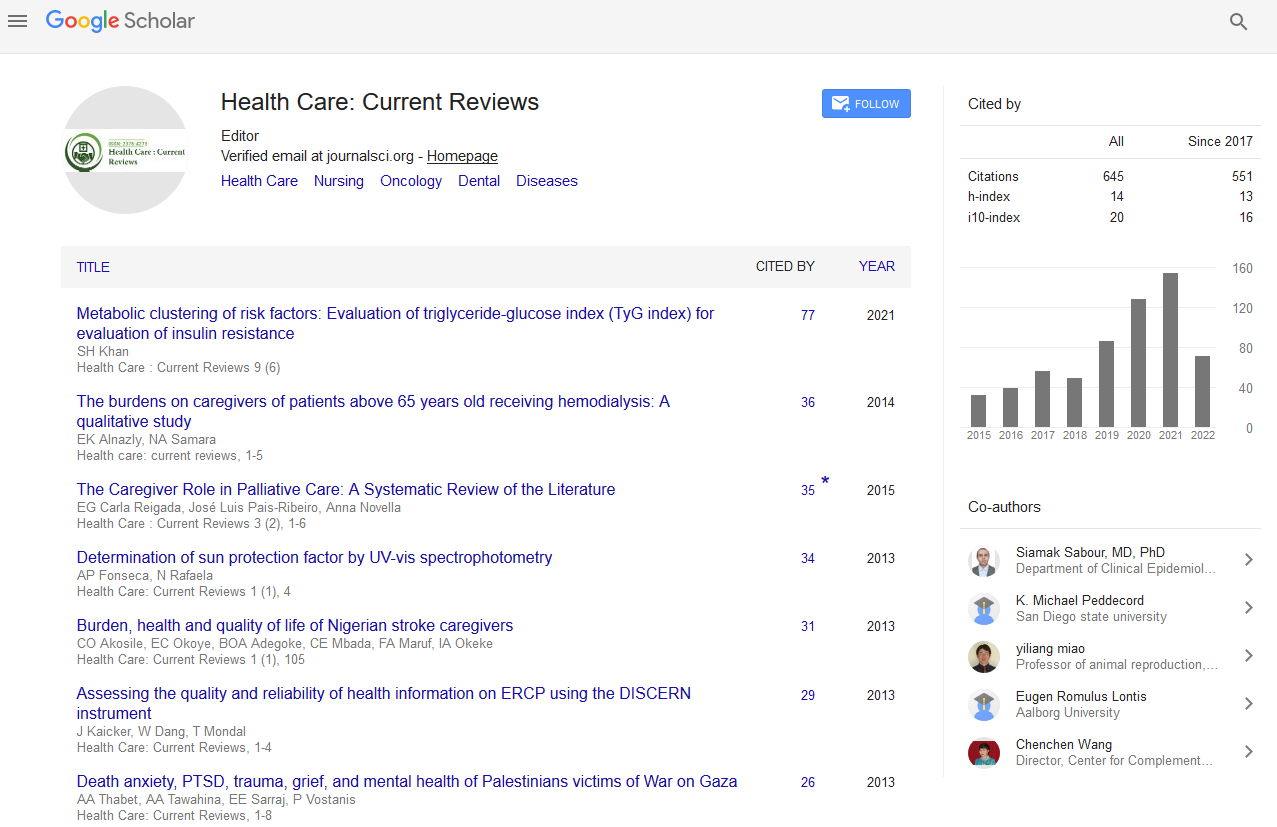PMC/PubMed Indexed Articles
Indexed In
- Open J Gate
- Academic Keys
- RefSeek
- Hamdard University
- EBSCO A-Z
- Publons
- Geneva Foundation for Medical Education and Research
- Google Scholar
Useful Links
Share This Page
Journal Flyer

Open Access Journals
- Agri and Aquaculture
- Biochemistry
- Bioinformatics & Systems Biology
- Business & Management
- Chemistry
- Clinical Sciences
- Engineering
- Food & Nutrition
- General Science
- Genetics & Molecular Biology
- Immunology & Microbiology
- Medical Sciences
- Neuroscience & Psychology
- Nursing & Health Care
- Pharmaceutical Sciences
Antenatal care utilization and infant birth weight in low income families
Global Healthcare & Fitness Summit
July 20-22, 2015 San Francisco, USA
Chin-Shyan Chen
Scientific Tracks Abstracts: Health Care: Current Reviews
Abstract:
The main purpose of this study is to evaluate the antenatal care utilization of pregnant women and their impacts on infant
birth outcome in low income families. This study uses 2005 National Health Insurance claims data and birth certificate
data in Taiwan. We select women who gave birth in 2005 by dividing the sample to high income families (N=135,246) and low
income families (N=68,575). Two-stage regression estimation is used to examine the factors that affect the number of antenatal
care visits first and then the relationship between antenatal care utilization and infant birth weight. The results show that
pregnant women from low income families receive less antenatal care visits than their counterparts. Infants from low income
families also tend to have lower birth weight than their counterparts. Moreover, the number of antenatal care visits is found to
be highly significant positively associated with infant birth weight with an estimate of 57.5. This implies that pregnant women
in low income families receive one more antenatal care visit will induce an increase of approximately 57.5 g in birth weight for
their infants. Those who are young are less educated are native and live in the less urbanization areas are more likely to have a
low birth weight infant. In order to further improve both pregnant women’s health and their infants’ health, the governments
need to put more efforts on providing antenatal care for pregnant women in low income families.
Biography :
Chin-Shyan Chen has completed his PhD from University of North Carolina at Chapel Hill. He is the Former President of Taiwan Society of Health Economics. He
currently serves as a Professor in the Department of Economics at National Taipei University, Taiwan. He has published more than 50 papers in reputed journals.


